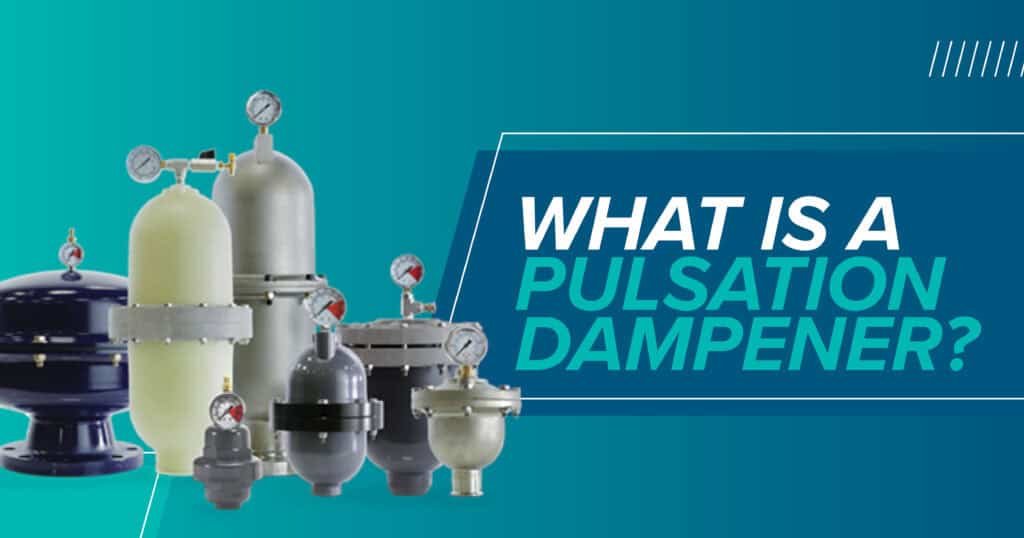Understanding the Role of Pulsation Dampeners in Pump Systems
In fluid handling systems, pressure fluctuations are a common challenge—specially those using positive displacement pumps. These pulsations can lead to equipment wear, inaccurate instrumentation readings and inefficient system performance. One of the most effective solutions to this problem is the installation of a pulsation dampener.
The Role of a Pulsation Dampener
A pulsation dampener is a device designed to reduce or eliminate pressure pulsations in fluid systems. It acts as a cushion that absorbs energy spikes and smooths out the flow of liquid being moved by a pump. Most commonly installed on the discharge side of a positive displacement pump, the dampener helps stabilize pressure and maintain a steady flow rate downstream.
Pulsation dampeners are often constructed with a chamber containing a flexible diaphragm, bladder or piston that separates a compressible gas (usually nitrogen) from the pumped liquid. As the pump discharges fluid in pulses, the dampener absorbs the pressure spike by compressing the gas. When the pulse subsides, the gas expands and helps push the liquid forward, effectively smoothing the flow.
Why Are Pulsation Dampeners Important?
1. Protect Equipment
Pulsations can cause damaging vibrations and mechanical stress on piping, fittings, valves and other downstream equipment. By absorbing pressure spikes, a dampener prolongs the life of system components and reduces maintenance costs.
2. Improve Accuracy of Instrumentation
Inaccurate readings from flow meters or pressure gauges are often the result of fluctuating flow or pressure. Pulsation dampeners help maintain more stable conditions, ensuring reliable data and process control.
3. Enhance Pump Performance
Without a dampener, positive displacement pumps may struggle with system resonance or cavitation risks. A dampener helps mitigate these effects and allows the pump to operate more efficiently.
4. Reduce Noise and Vibration
By stabilizing flow and reducing turbulence, pulsation dampeners significantly cut down on system noise and vibration—improving safety and working conditions.
Where Are Pulsation Dampeners Used?
Pulsation dampeners are used across a wide range of industries, including:
- Chemical Processing
- Oil & Gas
- Water Treatment
- Food & Beverage
- Pharmaceuticals
- Pulp & Paper
Any process involving metering pumps, reciprocating pumps or diaphragm pumps can benefit from pulsation dampening to protect equipment and improve fluid delivery.
Choosing the Right Dampener
When selecting a pulsation dampener, several factors should be considered, including:
- Pump type and flow characteristics
- System pressure and temperature
- Fluid properties (viscosity, corrosiveness, abrasiveness)
- Material compatibility (metal or plastic housings, elastomer types)
Partnering with an experienced team like DXP Pacific can ensure the proper sizing, selection and installation of a pulsation dampener tailored to your application.
Your Partner for Fluid System Optimization
At DXP Pacific, we specialize in designing and maintaining fluid handling systems that operate at peak performance. Whether you’re upgrading an existing system or planning a new installation, our team can help you assess your needs and integrate the right pulsation dampening solutions.
Contact us today to learn more about how pulsation dampeners can protect your equipment, improve system efficiency and reduce maintenance costs.

